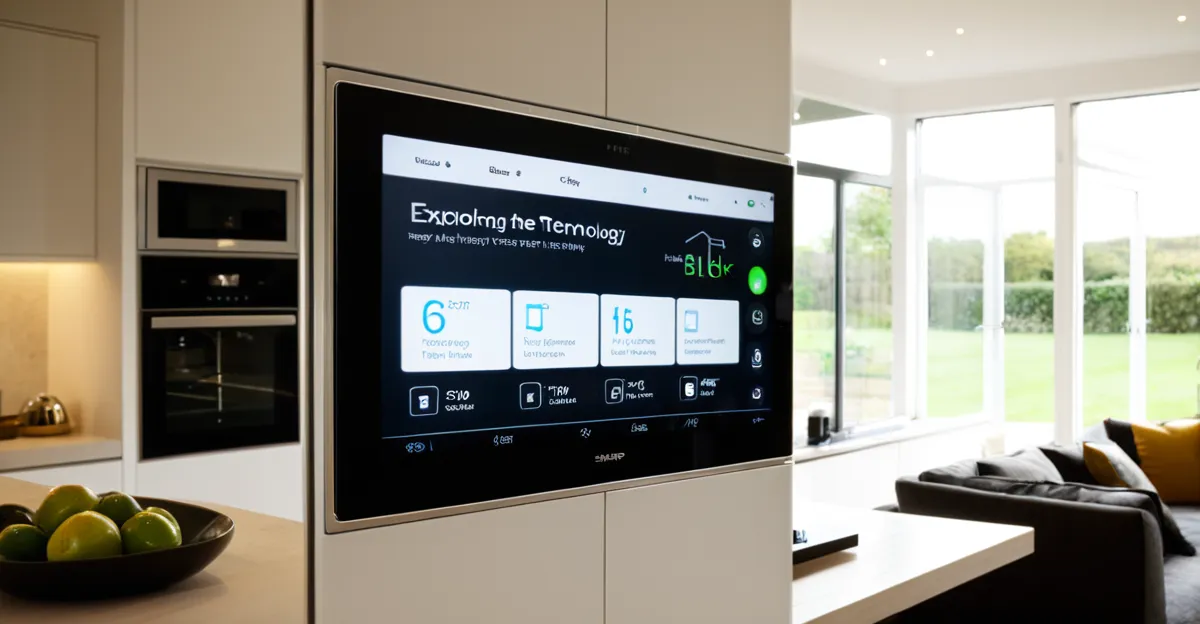Essential Advantages of Smart Home Technology for UK Households
Smart home benefits UK residents by offering enhanced convenience that simplifies daily living. Automated systems control lighting, heating, and appliances remotely, allowing UK households to tailor home environments effortlessly. For instance, scheduling heating to switch on before arrival improves comfort and reduces wasted energy.
Energy efficiency is a foremost smart home advantage. Smart thermostats and lighting systems adapt to occupants’ patterns, significantly lowering energy consumption and leading to cost savings on utility bills. This is particularly valuable for UK households facing rising energy prices and seeking sustainable living options.
Have you seen this : How can you choose the perfect lighting for a UK home interior?
Improved home security is another critical benefit. Advanced smart devices, such as cameras and motion sensors, provide round-the-clock surveillance while sending real-time alerts to homeowners’ smartphones. This not only deters intruders but also enhances safety for families in the UK.
Together, these benefits create a compelling case for adopting smart technologies in British homes. They combine lifestyle improvements with financial and security gains, making smart home technology a practical investment for UK households seeking convenience, efficiency, and peace of mind.
In the same genre : What are the Latest Home Interior Trends in the UK?
How Smart Devices Integrate with Everyday UK Living
Smart home devices UK are designed for seamless integration with daily life, making smart home benefits UK residents enjoy more accessible and user-friendly. A key advantage is how these devices connect with British energy suppliers and services, allowing homeowners to monitor and manage consumption in real time. This integration helps reduce bills while supporting UK households’ drive toward sustainability.
British weather significantly influences energy usage patterns, and smart home devices adapt accordingly. For example, smart thermostats adjust heating schedules based on forecasted temperature changes, optimizing comfort and efficiency throughout the year. Such responsiveness demonstrates clear smart home advantages tailored to UK living conditions.
Moreover, interoperability with UK home infrastructure ensures that smart devices work smoothly with existing systems. Wireless standards like Zigbee and Z-Wave allow easy connection between devices, even in older buildings, enhancing convenience without requiring costly renovations.
Ultimately, these smart home devices UK offerings streamline and enhance everyday routines, combining convenience, energy savings, and compatibility in a way that suits typical UK household lifestyles. This integration makes smart technology not just an upgrade but a practical component of modern British homes.
Practical Examples and Case Studies from Across the UK
Exploring UK smart home case studies reveals varied adoption patterns between urban and rural settings. Urban households often benefit from robust broadband connections, enabling fuller use of smart home devices UK like automated lighting, thermostats, and security cameras. In contrast, rural homes may face connectivity challenges but still gain from energy-efficient heating controls tailored to local conditions.
Real-life smart home examples UK show significant cost savings through optimized energy use. For instance, some UK households report reductions of up to 20% in heating bills by using smart thermostats that learn their schedules and adjust accordingly. This clearly demonstrates smart home advantages in financial and environmental terms.
User experiences also highlight improved safety. Families employing smart security systems report peace of mind from remote monitoring and instant alerts, which help them respond quickly to unusual activity. These stories underscore the tangible benefits that UK households gain beyond convenience, adding genuine security and well-being value.
Such case studies confirm how smart home benefits UK extend across different regions, lifestyles, and budgets. They provide practical proof of the effectiveness and versatility of smart technology in real British homes.
Government Support and Incentives for Smart Home Adoption
The UK government smart home incentives play a pivotal role in encouraging adoption among UK households. Various energy grants and support schemes help reduce the upfront costs of installing smart home technologies. For example, grants often target the purchase of smart thermostats and energy-efficient heating controls, which align with national goals to lower carbon emissions.
Energy providers in the UK also promote smart home technology through rebate programs and discounted devices. These initiatives make it easier for households to benefit from smart home advantages without prohibitive expenses. Such partnerships between government and utilities support a broader transition to sustainable energy use.
In addition to financial incentives, strict UK regulations and standards ensure smart homes meet safety, interoperability, and data security requirements. This regulatory framework fosters consumer trust, which is essential for widespread acceptance. The government’s focus on setting clear guidelines supports consistent quality and performance across smart home devices.
Together, these support mechanisms demonstrate a strong commitment to expanding smart home benefits UK-wide, helping more households adopt innovative technology that enhances energy efficiency and home security while easing financial burdens.
Key Considerations and Potential Challenges for UK Homeowners
Smart home challenges UK homeowners often face start with privacy concerns, especially regarding data collected by smart devices. UK households must evaluate how manufacturers protect personal information and comply with stringent UK data protection laws. Ensuring encrypted data transmission and local storage options can address these privacy issues effectively.
Another critical consideration is the upfront cost and return on investment. Although smart home advantages offer long-term savings—such as reduced energy bills—initial expenses for devices and installation can be significant. UK homeowners should assess the financial impact carefully, factoring in government incentives and energy grants that may offset costs.
Compatibility with older UK properties also presents challenges. Many British homes have legacy wiring and infrastructure not designed for seamless integration with modern smart devices. Selecting products that support standards like Zigbee and Z-Wave helps overcome this hurdle, enabling efficient interoperability without costly renovations.
In summary, UK homeowners looking at smart home adoption must balance benefits against these challenges. Thoughtful evaluation of privacy, costs, and infrastructure compatibility ensures smart home technology delivers maximum value tailored to each household’s unique needs.






